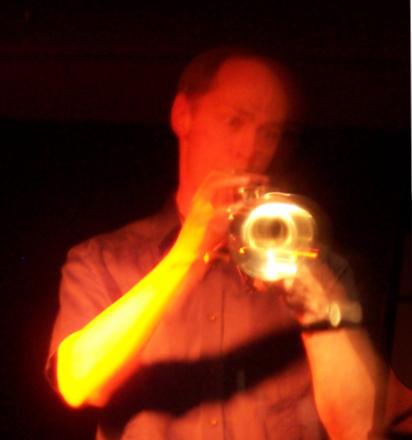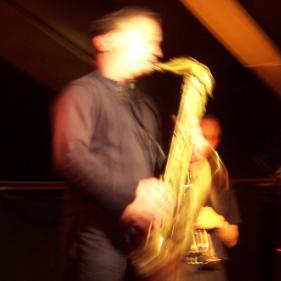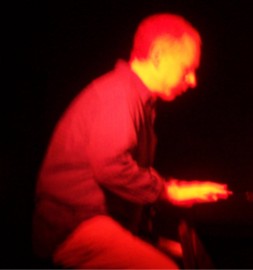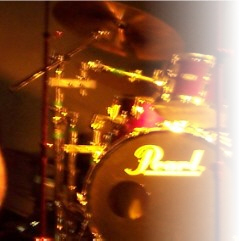|

This page is devoted to my double bass and how its tuned.
Both are unusual, so keep reading!
Design
Strings
5ths Tuning - Fifth Tuning
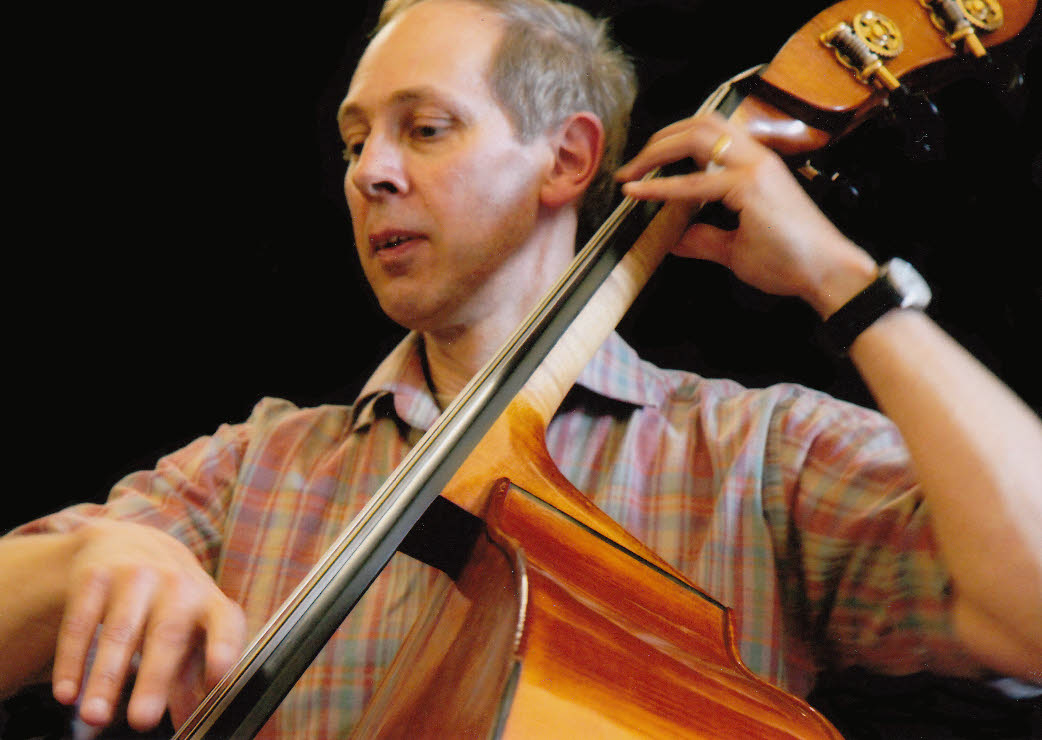
Philip Bishop playing Malcolm
Healey's double bass
Design
I am very fortunate to be able to play on a really fine double
bass made by Malcolm Healey (of M
& J Healey Violins).
The design is based on the Lorenzo
Storioni attributed corner-less double bass at Ken Smith Basses.
I chose this instrument as a starting point mainly because the
shape supports excellent tonal characteristics and ease of playing
(particularly the shape of the upper bout) - and also because it
looks good!
Dimensions and shape (including the depths of the bouts and curve
of the rear plate were copied from pictures of the 'Storioni'. All
dimensions were slightly scaled up to give a bass the same body
length as Malcolm's own 5 string bass, but keeping all proportions
the same as the 'Storioni'. Slight viol-shaped corners were added
to together with a handle to help portability (at the insistence
of Jane). The neck was proportioned to give Malcolm's preferred
standard string length (shorter than the original 'Storioni",
which has a very long neck and string length). The head shape of
the original was followed as closely as possible.
Malcolm used finely figured wood seasoned over many years in his
store. His meticulous craftmanship has resulted in a very fine
bass which is very responsive, very comfortable to play and has an
fine warm strong tone.
The double bass is fitted with:
machine heads: ebony turners with brass cogs
from Ken
Smith Basses
tailpiece: rosewood compensated, with synthetic
chord from Mike Pecanic
endpin: wooden peg leg, fitted to a Rabbath style
tilt block from K.C.
Strings.
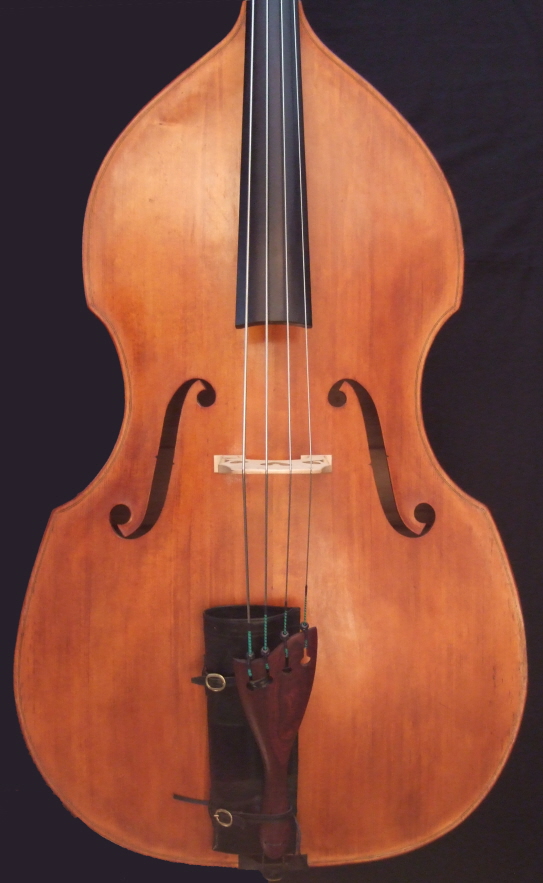
Front view of Malcolm Healey
double bass, inspired by the 'Storioni'
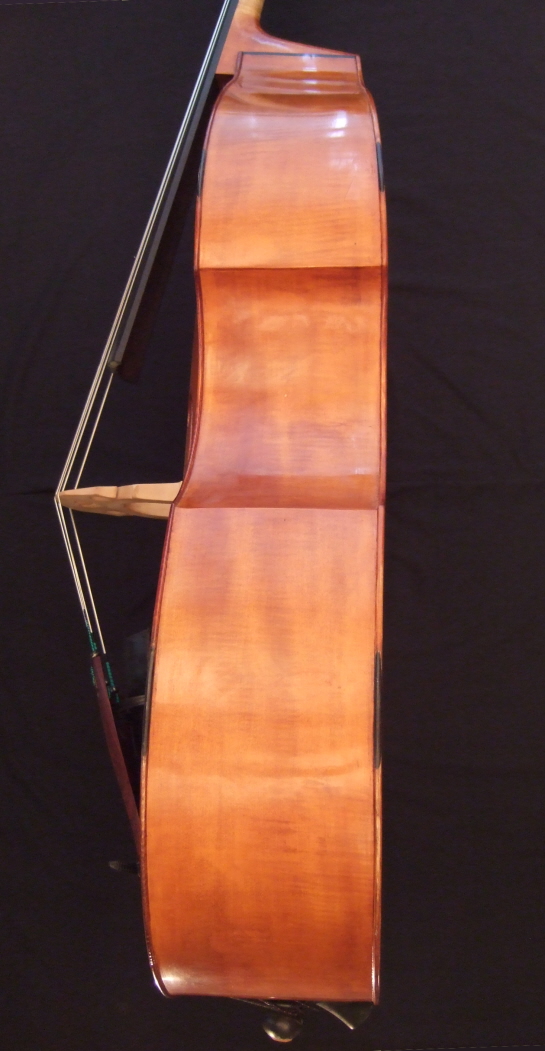
Side view, showing the upper back
profile with a slight curve
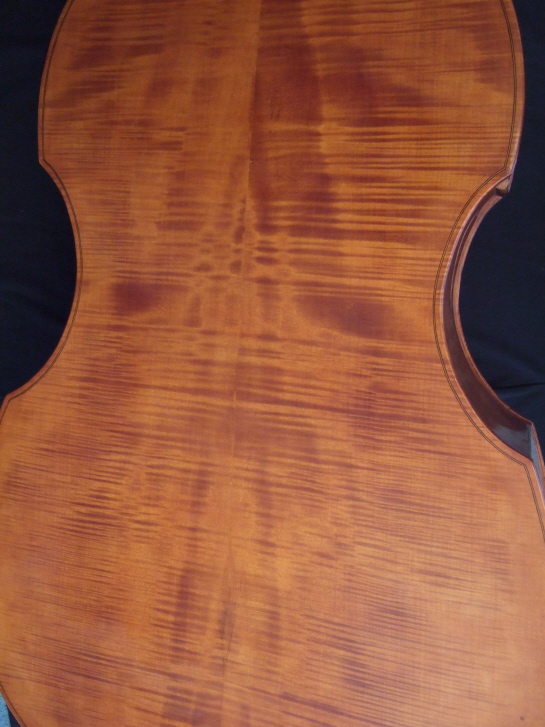
Back view, showing fine flamed
maple figures
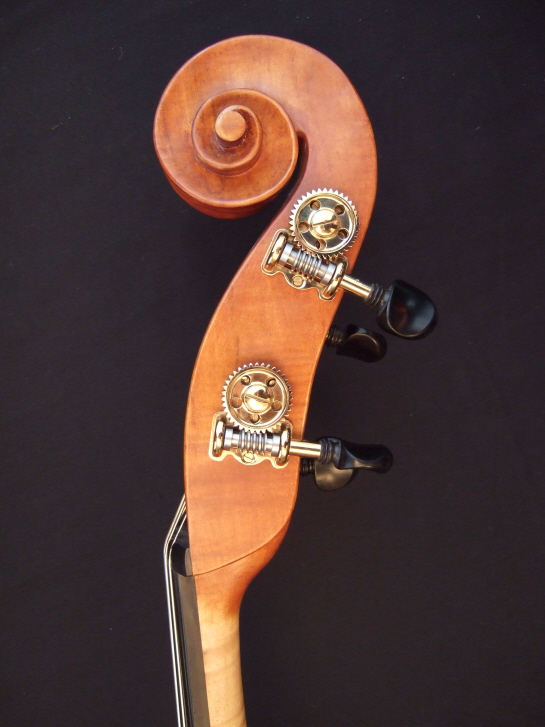
Scroll copied from 'Storioni'
fitted with ebony turners with brass cogs from Ken
Smith Basses
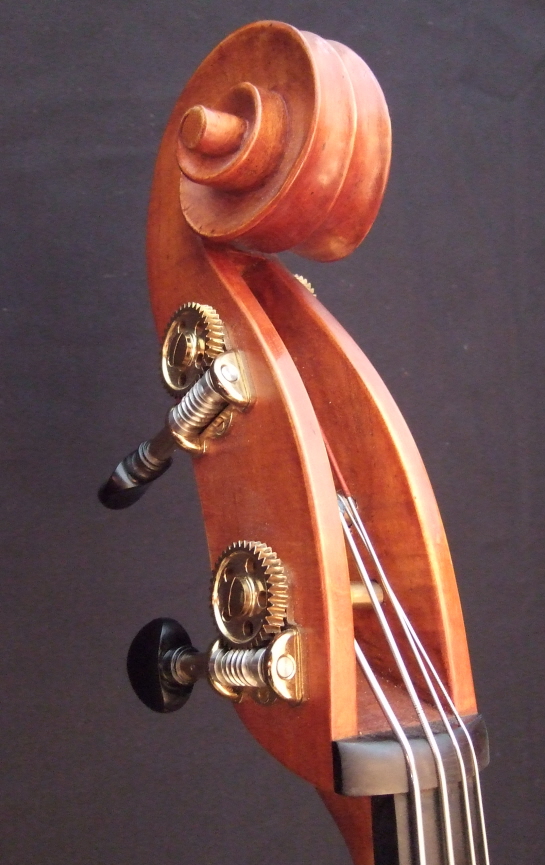
Scroll, with Pirastro Evah
Pirazzi strings
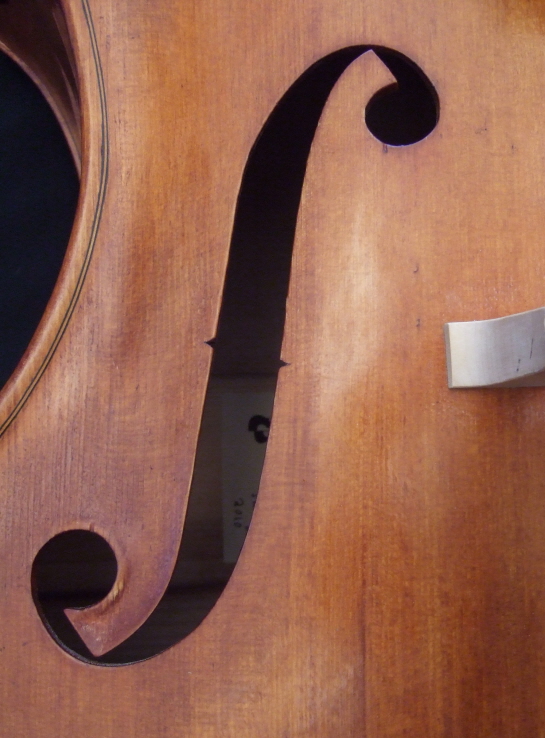
F hole
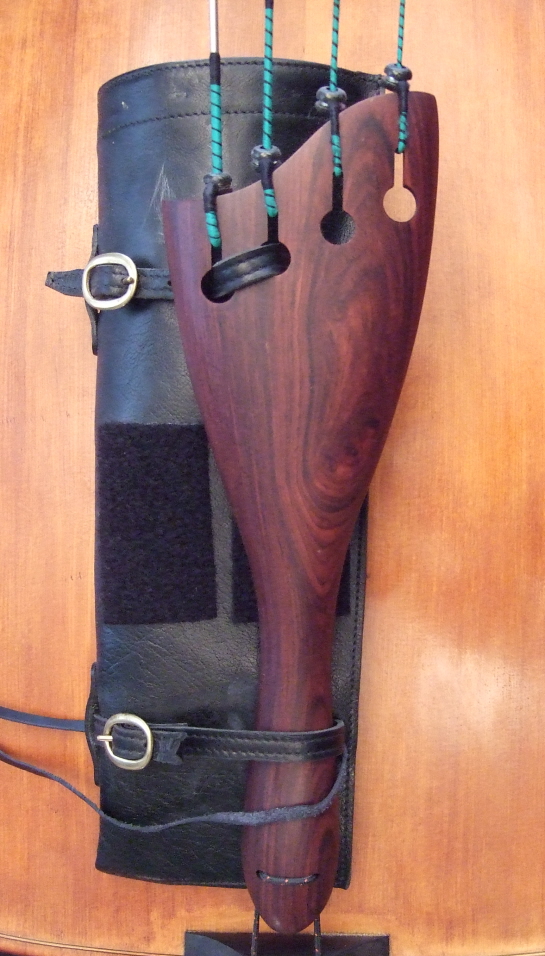
Rosewood compensated tailpiece,
with synthetic chord from Mike Pecanic
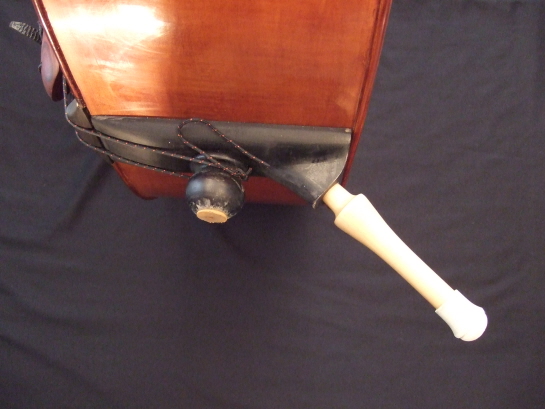
Wooden peg leg end-pin, fitted to
a Rabbath style tilt block from K.C. Strings
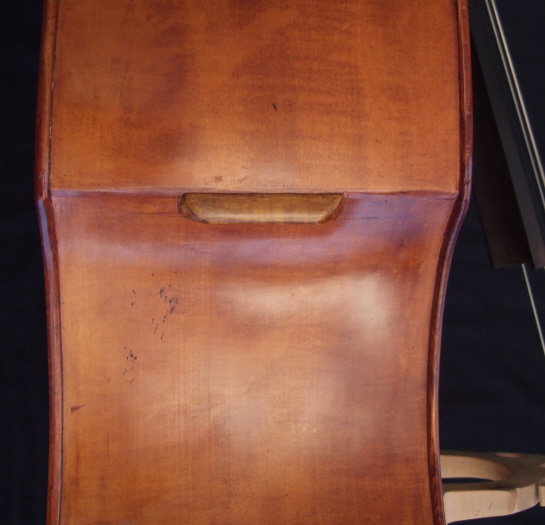
Handle to help carry the base
(very useful)
Strings
The strings are tuned in fifths (rather than 4ths) and are as
follows:
A (high) - Pirastro Evah Pirazzi, Solo A, medium
D - Pirastro Evah Pirazzi, Orchestral D, medium
G - Pirastro Evah Pirazzi,Solo FIS (F sharp), medium, tuned up to
G
C (low) - Pirastro Evah Pirazzi, B5, weich, tuned up to C
When B5 low string is tuned up to C, the extra tension
counteracts the lighter guage giving a very responsive bottom
string that is balanced with the other strings and blends very
well. The overall balance and responsiveness is really good,
much better than I dared hope for!
I like the response and sound of these Evah Pirazzi
strings. I play lots of orchestral music and the occasional
solo, as well as jazz and big band gigs; the strings seem equally
well suited to all these (conflicting) styles.
Also I'd like say a big thank you to Pirastro for their help in
suggesting and providing strings to try out.
5ths Tuning
From the above, its clear my bass is unusual in that its tuned in
fifths, the same as a cello. I started playing the double bass
with normal 4ths tuning and continued that way for a number of
years, during which time I tried out a 5 string bass and looked at
extensions as a way to get the lower notes below bottom E.
None of these was really satisfactory and I finally investigated
5th tuning. A brief trial with my normal strings re-tuned showed
it was possible and I spent 3 months learning to play fifth tuning
on my 4 string bass (with the de-tuned strings) whilst playing
gigs and orchestral sets on my 5 string bass with 4th tuning. At
the end of 3 months (which coincidentally was 1 January) I could
play all my practice exercises and music on the 5ths tuned bass
pretty well, so I formally switched to 5th tuning.
A couple of days later at orchestra rehearsal was real
eye-opener. Trying to sight ready a relatively straight
forward Brahms symphony was terrible - my brain just couldn't go
fast enough. With perseverance, however, after another 3 months
the fingering started to settle down as the benefits and
limitations of 5th tuning became apparent. Most of these are well
described by Joel
Quarrington on his website.
For me the biggest benefit was to make the instrument much
more playable across its entire normal orchestral range.
Here's a few of the more interesting pros and cons:
+ range to low C is part of normal playing
+ notes on top (A) string two positions lower, a big plus for
most playing!
+ bass sounds better with 5th tuning (more resonant)
+ tuning same as cello (good for small ensemble playing)
+/- the different finger/string positions aren't apparent when
playing in a section
+/- harmonics are different (so some written harmonics don't
work)
- overall, slightly more shifting
+ forced me to improve my technique
+ some music easier (eg Pictures Gnomus)
- some music harder (eg Beethoven's 7th symphony)
- it took me a couple of years to become really settled in 5th
tuning
- to play other basses I need to revert back to 4th tuning
- teaching requires pupils learning in 4th tuning
To me, the benefits far out-way the disadvantages and its now
become a totally natural way of playing.
How to reach me
Telephone 01372 454962 / 07950 235329
|

